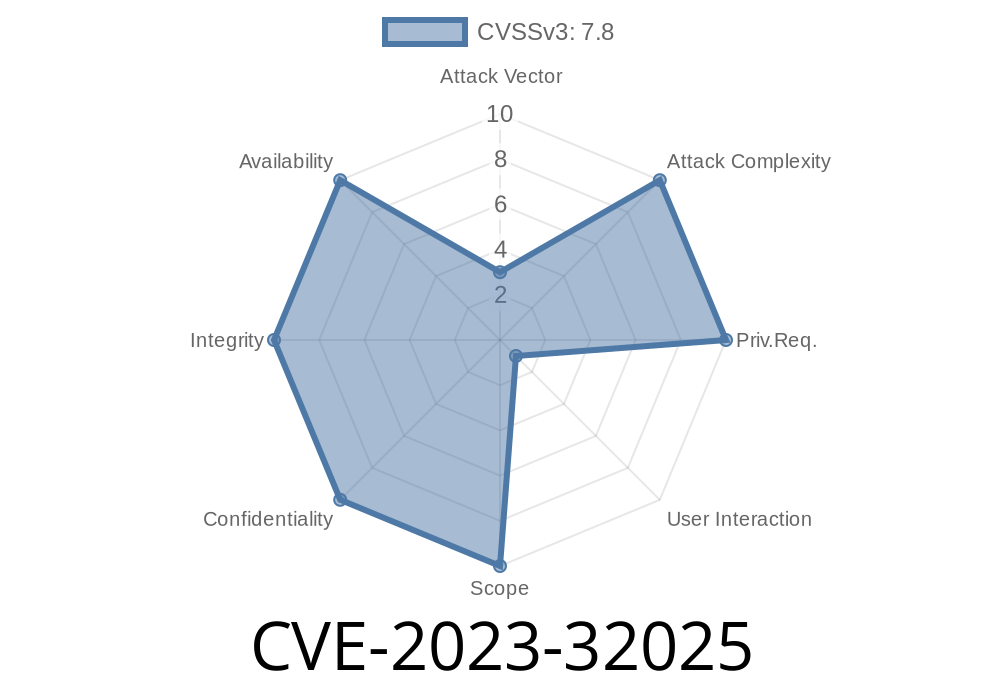In this blog post, we will focus on a critical vulnerability discovered in Microsoft ODBC Driver for SQL Server, which has been assigned the Common Vulnerabilities and Exposures (CVE) ID CVE-2023-32025. Microsoft ODBC Driver for SQL Server is a commonly used software component that provides a database connectivity interface between SQL Server and programming languages, scripts, and applications.
When exploited, this vulnerability allows a potential attacker to execute arbitrary code remotely on a vulnerable system, thus exposing the SQL Server to security breaches and threats. In this detailed post, we will provide a comprehensive analysis of CVE-2023-32025, including a code snippet, links to key references, and specific exploit details to help you understand and address the issue.
Exploit Details
The vulnerability in Microsoft ODBC Driver for SQL Server is due to improper input validation when processing certain database query responses, resulting in a buffer overflow condition. The buffer overflow condition can lead to remote code execution (RCE), where an attacker can execute arbitrary code on the affected system, potentially leading to a complete system takeover.
Upon successful exploitation, the attacker might have the ability to execute commands, modify or delete data, as well as create new accounts with full user rights. This is particularly dangerous for servers hosting sensitive information such as financial data, personal identifiable information (PII), or any other confidential material.
Code Snippet
The following is a simple code snippet demonstrating the use of a vulnerable ODBC driver and how it processes certain database query responses. This snippet is for illustration only and is not intended for malicious use.
import pyodbc
# Connect to the database using the vulnerable ODBC driver
connection_str = "DRIVER={ODBC Driver for SQL Server};SERVER=server_IP;DATABASE=database_name;UID=username;PWD=password;"
conn = pyodbc.connect(connection_str)
# Specially-crafted SQL query that triggers the vulnerability
sql_query = "SELECT * FROM exp_table WHERE name= ?;"
# User-supplied input that would lead to a buffer overflow
user_input = "A" * 10000
# Running the SQL query with the user_input
cursor = conn.cursor()
cursor.execute(sql_query, user_input)
# Fetching and processing the results
results = cursor.fetchall()
for row in results:
print(row)
# Closing the connection
cursor.close()
conn.close()
Original References
For an in-depth understanding of this critical vulnerability, it's essential to review official references and guidelines. The following resources provide extensive information related to CVE-2023-32025:
Mitigation and Fixes
Microsoft has released patches to address the vulnerability in the ODBC Driver for SQL Server. Users and organizations are advised to promptly update their systems incorporating these patches. You can find the updates in the Microsoft Security Update Guide: [Link to Update Guide]()
It's crucial to ensure that the affected systems are properly updated to prevent any potential cyber attacks exploiting this vulnerability. Regularly review and apply all relevant security updates to ensure the safety of your IT infrastructure.
Conclusion
This article has provided a detailed overview of the CVE-2023-32025 vulnerability affecting Microsoft ODBC Driver for SQL Server. This critical vulnerability, when exploited, allows remote code execution, putting sensitive information at risk. By understanding the specifics of the vulnerability and applying necessary patches, you can protect your SQL servers from potential cyber attacks and ensure data security.
Timeline
Published on: 06/16/2023 01:15:00 UTC
Last modified on: 06/16/2023 03:19:00 UTC
